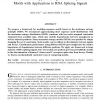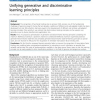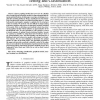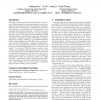27 search results - page 2 / 6 » Sequence Discrimination Using Phase-Type Distributions |
RECOMB
2003
Springer
14 years 5 months ago
2003
Springer
We propose a framework for modeling sequence motifs based on the maximum entropy principle (MEP). We recommend approximating short sequence motif distributions with the maximum en...
BMCBI
2010
13 years 5 months ago
2010
Background: The recognition of functional binding sites in genomic DNA remains one of the fundamental challenges of genome research. During the last decades, a plethora of differe...
TSP
2010
12 years 11 months ago
2010
Sparse graphical models have proven to be a flexible class of multivariate probability models for approximating high-dimensional distributions. In this paper, we propose techniques...
SIGIR
2008
ACM
13 years 4 months ago
2008
ACM
This paper addresses the issue of query refinement, which involves reformulating ill-formed search queries in order to enhance relevance of search results. Query refinement typica...
EACL
2003
ACL Anthology
13 years 6 months ago
2003
ACL Anthology
Research on the discovery of terms from corpora has focused on word sequences whose recurrent occurrence in a corpus is indicative of their terminological status, and has not addr...




